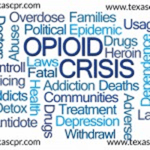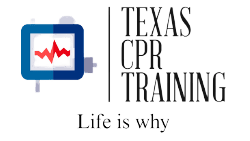
The Opioid Crisis
There are so many theories on how and why someone gets addicted to drugs – whether legally or illegally obtained. Some experts have gone as far as to say it is because the addict is isolated socially. This seems a bit of an over stretch, as any addict I have ever seen has been very well socially connected and even has good support systems. In fact, from what I have seen, it has been the addicts’ social connections that have gotten them hooked.
Whatever the reasons for starting, one addiction that is crippling the nation is that of opioids. These include prescription drugs such as codeine, oxycontin and morphine, and street drugs such as heroin and fentanyl.
Oxycontin
Oxycontin is a prescription pain killer that in 2013 became more controlled due to its highly addictive properties. People addicted to this report feelings of euphoria, relaxation and decreased pain when “high” on it.
Heroin
Heroin is an illegal opioid drug. It is most frequently used via injection, which rapidly results in a pleasant feeling of euphoria, warmth, drowsiness and decreased pain.
Heroin and many opioid painkillers are nearly indistinguishable from each other, having a similar chemical structure. Their characteristic chemical structure interacts with certain opioid receptors – targeting the brain’s reward centers, and inducing the euphoria and relaxation.
Heroin is converted to morphine in the brain, and is known be about three times stronger than morphine. So much larger doses of opioid painkillers would be required to come close to matching the intensity of heroin’s drug high.
Statistics
Approximately 517,000 people in the United States are heroin addicts, with an estimated 1.9 million addicted to opioid painkillers. Over 8,000 people die each year from herion overdose, and an estimated 17,000 from opioid painkiller overdose. In Collin County from 2012-2014, for every 100,000 people there were 196 overdose deaths. In Dallas County that number was 852. See statistics on drug overdoses and deaths in Texas.
Withdrawal
Withdrawal from heroin, oxycontin and other opioid painkillers is brutal, which keeps the addict seeking more of the drug, not only to continue experiencing euphoria, but also to stop the physical and mental torture that accompanies withdrawal.
Opioids have severe adverse health effects on the user, including involuntarily stopping of breathing, increased risk of suicide, speech changes, mood changes, kidney disease and more. Moreover, 43% of vehicle fatalities involve someone under the influence of opioids, with alcohol as a factor at 37%.
Plus, addiction tears families apart as the addicts’ behavior becomes erratic with combative personality changes, risky behavior, often stealing from family and friends to fund their addiction, and addicted parents spending money for necessities on heroin or oxycontin instead.
As far as dealing with a loved one who is an opioid addict – kindness, love and understanding only go so far. Sometimes professional intervention is needed. My search for opioid rehab turned up pages of results, which definitely highlights the severity of the problem.
But if you do know an addict, there are a couple of steps you can take if they overdose. And even if you don’t know one personally, bear in mind that you probably pass one at the store and on the street everyday.
Here’s What you can do
So here’s what you can do if you see someone who has overdosed:
- Stay with the person
- Try to keep them responsive
- If they are not breathing, perform CPR
- If they are breathing but unresponsive, put them in the recovery position – this will prevent them from suffocating should they vomit
- Call 911
I would highly suggest that if you are a parent, be aware of the signs of addiction, encourage your child to be involved in outdoor activities, look for motivational and coaching videos and books to share with them, and guide them as best as you can.
Even the best laid plans can fail, so if you have a child, other loved family member or friend that is an addict. Need help? Contact Drug Addicts Anonymous. One great place to start is the 12-step program nar-anon.org.
Educate yourself
Educate yourself and lets put an end to the opioid crisis in our own backyards.
Naloxone – Overdose deaths involving synthetic opioids, including fentanyl, increased by 80% from 2013 to 2014. Adding to the urgency to increase access to overdose reversal drugs, multiple doses of naloxone may be needed to reverse a fentanyl overdose, given its higher potency compared with other opioids. The FY 2017 President’s Budget request includes: • $12 million for SAMHSA’s Grants to Prevent Prescription Opioid and Heroin Overdose-Related Deaths, which will help equip first responders with naloxone and provide education on its use. • $10 million for HRSA’s Rural Opioid Overdose Reversal Grant Program to enable 30 rural communities to purchase naloxone to rapidly reverse the effects of opioid overdoses, and to train licensed health care professionals and emergency responders on its use.
Substance Abuse and Mental Health Services Administration SAMSHA
Where can family members go for information on treatment options?
What is the U.S. Opioid Epidemic?
Mental Health and Substance Abuse
Broug
